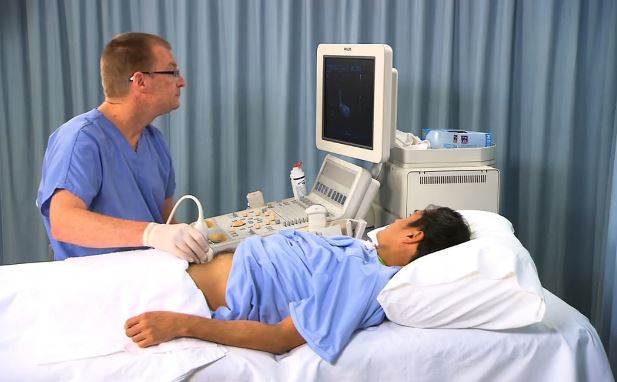

Library > Medical Professional - Ultrasound > Superficial Structures > Ultrasound of Male Reproductive Organs for Medical Professionals
Try Simtics for free
Start my free trialUltrasound of Male Reproductive Organs for Medical Professionals

Check our pricing plans here
Unlimited streaming.
This module teaches you how to prepare for and perform an ultrasound examination of the male reproductive system. Including both Learn and Test modes, the online simulator offers three clinical scenarios that test your ability to perform an ultrasound of the male reproductive system. Practice the steps of the procedures online as often as you want, until you feel confident.
If you are not a medical student or physician, you may prefer the other version of this module, which includes all the procedural information needed by professionals in other roles: /shop/imaging/sonography/superficial-structures-and-small-parts/ultrasound-assessment-of-the-male-reproductive-organs/
You’ll learn
- to practice, perfect, and test your skills in performing an ultrasound scan of the scrotum, including transabdominal and endorectal sonographic scanning
- to better visualize and understand the anatomy and physiology of the scrotum, testes, and prostate, with our 3D model and illustrations
- how to identify on images the common abnormalities and pathologies of the scrotum
- to describe the technique for prostate biopsy and radiation seed implantation
- much more (see Content Details for more specific information)
- Describe and demonstrate the protocol for sonographic scanning of the scrotum.
- Identify and describe sonographic images of congenital abnormalities of the scrotum.
- Identify and describe sonographic images of pathologies of the scrotum.
- Identify and describe sonographic images of extratesticular disease processes.
- Identify the anatomy and explain the physiology of the prostate on diagrams and sonograms.
- Describe and demonstrate the protocol for transabdominal and endorectal sonographic scanning of the prostate.
- Identify and describe sonographic images of benign and malignant pathologies of the prostate, including benign hyperplasia, prostatitis, carcinoma, and calculi.
- Explain the technique for prostate biopsy.
- Define the criteria for an ultrasound appearance of prostate tumor staging.
- Explain the technique for radiation seed implantation.
The SIMTICS modules are all easy to use and web-based. This means they are available at any time as long as the learner has an internet connection. No special hardware or other equipment is required, other than a computer mouse for use in the simulations. Each of the SIMTICS modules covers one specific procedure or topic in detail. Each module contains:
- an online simulation (available in Learn and Test modes)
- descriptive text, which explains exactly how to perform that particular procedure including key terms and hyperlinks to references
- 2D images and a 3D model of applied anatomy for that particular topic
- a step by step video demonstration by an expert
- a quiz
- a personal logbook that keeps track of all the modules the learner has studied and how long
For more details on features and how your students can benefit from our unique system, click here.





